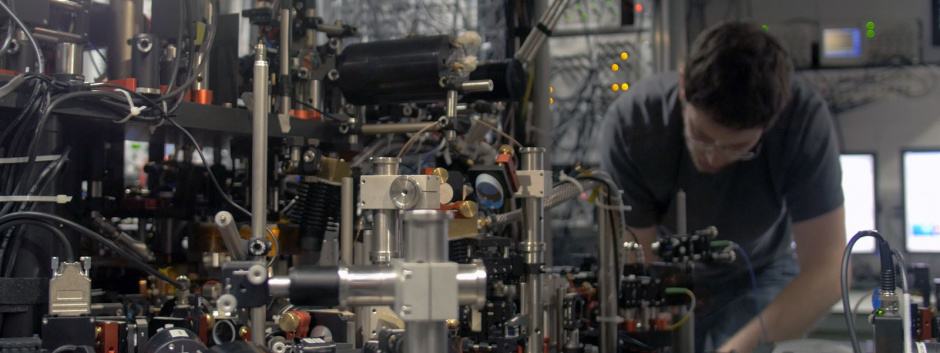
Particle accelerators are somewhat maligned but vastly important pieces of equipment. Vital to large-scale physics experiments such as those at CERN, they are sometimes derided as just the ultimate in “boys toys”. But high energy charged particles have many applications, including cancer therapy, highly accurate heating processes, probing exotic states of matter and even initiating nuclear fusion. The problem until now has been in achieving the very high energies – analogous to high particle speeds – without enormous and costly equipment.
The Strathclyde research, led by physicist Prof Paul McKenna, promises to lead to much more compact ion sources that have previously been available. McKenna has been studying the effects of focusing a laser into plasma, a form of matter consisting of gaseous charged particles. The laser produces very high electric fields which accelerate the ions to high speeds over a very short length; typically about a thousand times shorter than the radio-frequency cavities (similar to a microwave oven) generally used in accelerators.
“One of the main challenges in accelerating ions using intense lasers is that the ultrafast processes occurring over the short duration of the laser pulse can make it difficult to optimise an individual acceleration mechanism,” McKenna said. However, this can be avoided if the laser plasma acceleration is combined with other acceleration mechanisms, in what’s known as a hybrid scheme.
In a paper in Nature Communications, McKenna’s team describes a hybrid scheme where protons are accelerated in an ultra-thin polymer foil, tens of nanometres thick. Using the UK’s Vulcan petawatt laser system at the Science and Technology Facilities Council’s Central laser facility in Oxford’s Rutherford Appleton laboratory, the team focused polarised light of wavelength 1.053µm in picosecond pulses at the foil. The laser pulse generates a plasma from the polymer and accelerates hydrogen ions (protons) to speeds in the 100MeV range, which is useful for practical applications.
According to McKenna, this has potential for far more compact and cheaper particle beam tools. “A number of the promising applications of laser-accelerated ions require the ion energies to be increased,” he said. “ Our demonstration of high energy ion acceleration driven by a hybrid acceleration mechanism opens up a potential new route to enhancing and controlling laser-driven ion sources. A number of the promising applications of laser-accelerated ions require the ion energies to be increased."




Viking Link connects UK and Danish grids
These underwater links must, based on experience with gas pipelines, be vulnerable to sabotage by hostile powers. Excessive dependency on them could...